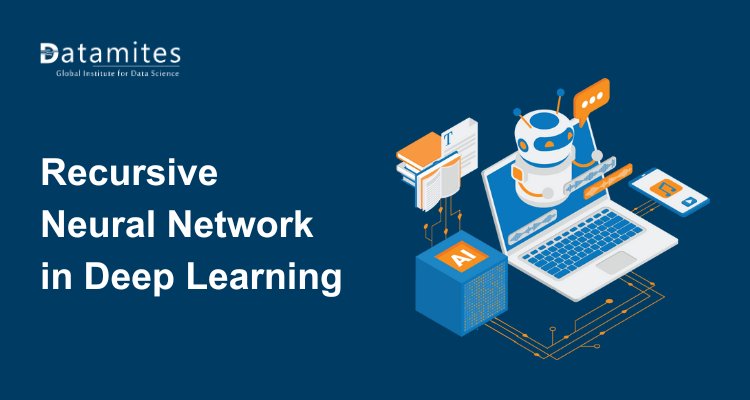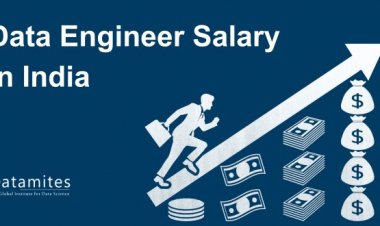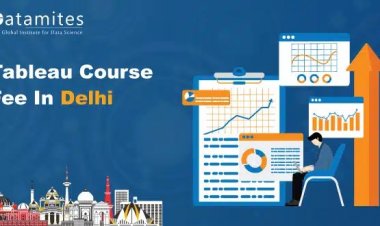How Himanshi Built a Successful Data Science Career
Himanshi navigated the data science field by combining continuous learning with practical experience. Her strategic approach and persistence helped her build a successful career in a competitive industry.

Himanshi’s journey into data science was anything but conventional. Starting with curiosity and a willingness to experiment, she navigated through complex datasets, mastered essential tools, and tackled real-world business problems. Today, as Lead Engineer Data Science at NeST Digital, she applies her expertise to drive impactful solutions, proving that dedication and continuous learning can turn early curiosity into a growing career.
What this really means is that building a successful career in data science is possible with the right guidance. Himanshi’s path offers practical insights, from choosing the right learning resources to applying skills effectively in the workplace. For those looking for inspiration, watch Datamites success story to see how structured learning and persistence can transform ambition into achievement.
How Himanshi Successfully Built Her Data Science Career with DataMites
Here’s how Himanshi transitioned into data science through structured learning and mentorship.
Q1: Can you tell us about your journey into data science?
I started my career at Infosys, mostly working with ETL and Java. Later, at Oracle, I was exposed to data analytics, which sparked my interest in data. After taking a maternity break, I decided to keep myself updated by joining a Data Science (CDS) course. That structured learning gave me confidence and kept me connected to the industry.
I eventually took two courses, one in Data Science and another in AI. They strengthened my fundamentals, helped me with interviews, and prepared me for projects in NLP and deep learning. Today, I work in generative AI, exploring large language models like GPT.
Q2: As a beginner, what topics should one focus on first?
Start with Python. You don’t need to be an expert, but you should be comfortable with basics, lists, dictionaries, loops, sorting, min/max functions. Interviewers want to see if you can think through problems and explain your approach.
Next, focus on Pandas, because data manipulation is a must-have skill. In interviews, I’ve always been asked at least one Pandas-related question.
Also, don’t skip statistics and understanding the math behind algorithms. It’s not enough to just use libraries, you need to know how and why things work. Finally, practice end-to-end projects so you can explain them clearly during interviews.
Q3: How important are projects when applying for jobs?
Extremely important. In interviews, I explained the same projects I had done during my courses, especially domain-based ones like banking use cases. Realistic projects help you understand both the technical side and the domain context, which is a big advantage.
You can also pick projects from Kaggle and link them in your resume. Recruiters like to see hands-on work, not just theoretical knowledge.
Q4: How would you describe life as a data scientist?
It’s very interesting. Unlike heavy coding roles, data science is a mix of coding, problem-solving, and working with data. You gain insights that can directly impact business decisions, which makes the job exciting.
When you move into NLP and generative AI, the work becomes even more fascinating. You get to compare traditional models with modern LLMs and realize how far the field has advanced. It feels rewarding to work on trending technologies.
Q5: How important is Python for beginners in data science?
Python is important, but starting out with beginner to intermediate skills is enough. The key is to understand lists, dictionaries, basic operations, and problem-solving logic. You should also be able to discuss your approach if you don’t fully solve a problem.
Q6: How should beginners with no programming background start?
Don’t worry if you’re starting from zero. Many people come into data science without coding knowledge. Courses that teach Python and statistics from scratch can take you step by step. The key is consistency, follow the flow of the course, revise regularly, and practice hands-on.
Q7: Which tools and libraries are crucial to focus on?
Pandas is very important for data manipulation, while PySpark is valuable in larger datasets. SQL knowledge is useful, but many tasks can also be handled with Pandas. Focus on mastering the tools used in real-world projects.
Q8: What beginner-friendly projects would you recommend?
Start simple and gradually increase complexity:
- Titanic survival prediction: great first project for confidence
- Portuguese home loan classification: introduces real-world classification problems
- House price prediction: a regression problem with structured data
- MNIST handwritten digit recognition: an introduction to neural networks and image data
These projects are widely used, easy to start with, and good for interview preparation.
Q9: How did you manage your time as a beginner and a new mother?
It was tough, but I followed a simple rule: whatever was taught in class, I revised the very next day and completed the assignments. Hands-on practice is critical, you can’t just read or watch videos.
After the course ended, I took extra time to revise Python, Pandas, and statistics, and practiced interview-style questions. I also explored topics more deeply to strengthen my understanding.
Q10: Is SQL still important for data science interviews?
Surprisingly, I wasn’t asked much SQL in interviews. Many questions were more about Pandas or PySpark, since you can do similar operations there. But knowing SQL basics is still useful, it depends on the company and role.
Q11: What’s your final advice for beginners entering data science?
Stay consistent, practice projects, and focus on understanding concepts deeply. Don’t aim to learn everything at once, pick a few algorithms, master them, and be prepared to explain them in detail. Most importantly, enjoy the process of working with data, because that curiosity will carry you forward.
Refer to these articles:
- From Curiosity to Code: Thiyaneshwaran’s Data Science Journey
- Breaking Into Data Science: Saif Ali Khan’s Journey
- Keerthana’s Transformation into a Data Engineer
Key Takeaways from Himanshi’s Data Science Journey.
Here are the main lessons and insights from her experience that can guide anyone looking to grow in data science and NLP.
- Career Path: Started in ETL and Java, moved into data analytics, and eventually transitioned into data science and generative AI. Structured courses helped her bridge the knowledge gap after a career break.
- Foundational Skills: Python is critical for beginners, focusing on basics like lists, dictionaries, loops, and problem-solving logic.
- Data Manipulation: Pandas is essential for real-world data handling; understanding statistics and math behind algorithms is equally important.
- Projects Matter: Hands-on projects, especially domain-focused ones, are crucial for building understanding and showcasing skills to recruiters.
- Tool Proficiency: Pandas, PySpark, and basic SQL are the most useful tools; focus on tools relevant to practical projects.
- Beginner-Friendly Projects: Recommended starting projects include Titanic survival prediction, home loan classification, house price prediction, and MNIST digit recognition.
- Interview Preparation: Focus on explaining project work, demonstrating problem-solving logic, and showing familiarity with practical tools rather than just theoretical knowledge.
- Time Management: Consistency and immediate revision after learning sessions are key. Hands-on practice reinforces learning.
- SQL in Interviews: Basic SQL is useful but often less emphasized than Pandas or PySpark, depending on the company.
- Learning Strategy: Master a few algorithms deeply rather than trying to learn everything at once. Enjoying the process and staying curious is critical for long-term growth.
- Work Nature: Data science combines coding, problem-solving, and domain insights, with advanced areas like NLP and generative AI offering even more rewarding challenges.
Refer to these articles:
- Data Science Course Fees in Mumbai
- Why Data Scientist Career in Mumbai
- Data Science Course Fees in Coimbatore
- Why Data Scientist Career in Coimbatore
Himanshi’s journey proves that data science isn’t just a buzzword, it’s one of the best IT courses for building a future-proof career. By mastering key skills, tackling real-world projects, and staying persistent, she turned challenges into opportunities. What this really shows is that anyone willing to learn and adapt can succeed in this dynamic field. Her story isn’t just inspiring; it’s a clear roadmap for anyone ready to dive into data science.
If Himanshi’s journey inspires you to explore data science, there’s no better time to enhance your skills. According to Precedence Research, the global data science platform market is expected to grow from USD 175.15 billion in 2025 to over USD 676.51 billion by 2034, at a CAGR of 16.20%. As industries generate massive amounts of data, demand for skilled professionals continues to rise. Choosing the right training institute that emphasizes practical learning, real-world projects, and career support is crucial. Enrolling in a reputed data science course in Mumbai, Bangalore, Chennai, Hyderabad, Pune, or Delhi can unlock a world of tech opportunities.
For Himanshi, expert guidance and structured training were key to her transformation. By pursuing in-depth courses in Data Science, Artificial Intelligence, Machine Learning, Python, and Data Analytics, along with earning globally recognized certifications from IABAC and NASSCOM FutureSkills, she built the skills and confidence to step into the tech domain.
DataMites Institute also offers data science training in Coimbatore, Ahmedabad, Chennai, Bangalore, Hyderabad, Pune, and Mumbai, along with flexible online learning options, making high-quality education accessible to fresh graduates, working professionals, and career switchers, just like it was for Himanshi.






